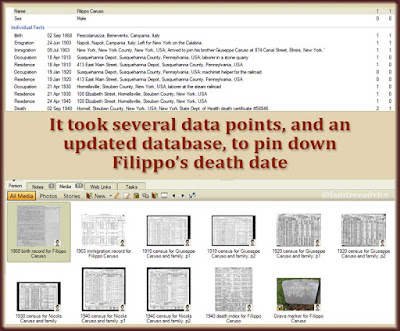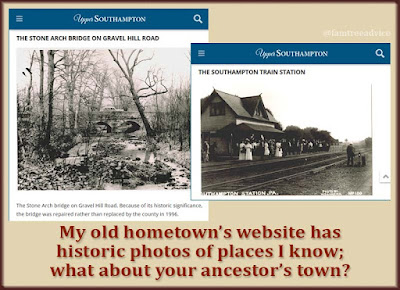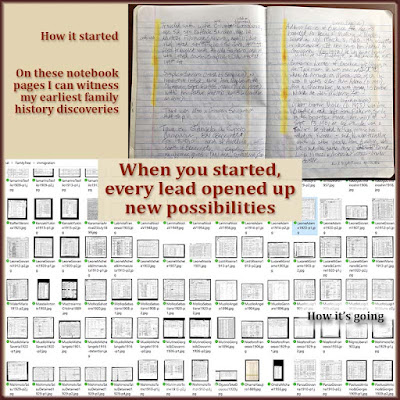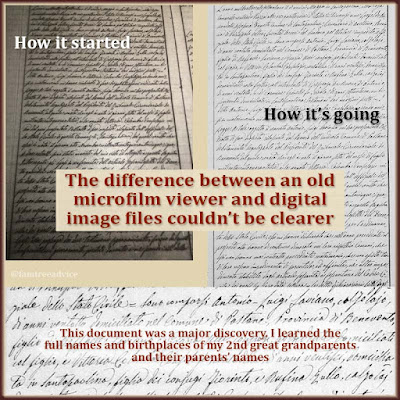Our genealogy research evolves over time. And we change our methods as we expand our family tree. I've gotten to a point where there are certain resources I must have handy as I work on my tree.
Here are 7 of my most-needed resources. Because of my heritage, some of my tools are Italian-specific. But I'm sure there are similar resources for your heritage.
1. Google Translate
After years of Italian research, I understand all the important genealogy words. Months, numbers, relationship words, and more. But sometimes a record mentions a mother-in-law (suocera), brother-in-law (cognato), or some other word I don't know or can't remember.
When that happens, I rely on Google Translate. It's critical when I'm faced with a free-form document explaining how a soldier died in the war. Or how someone died in a tavern while passing through another town.
I keep Google Translate on the always visible bookmarks toolbar of my web browser.
2. Google Maps and Bing Maps
I need both map websites on my bookmarks toolbar. When I'm reading an old vital record, and it includes a street name, I want to see the place! Google Street View is wonderful for seeing the house or the neighborhood. But Bing Maps does a better job of showing every last street name in my ancestral Italian towns.
 |
| Keep both types of maps handy. Each one has its benefits, and you'll get more value by using both. |
If I'm looking up a street in Italy, I locate it on Bing Maps, then find the same, unmarked location on Google Maps. Now I can use Google Street View for a better perspective.
For U.S. addresses, Bing Maps includes the county name up at the top. Google Maps makes me read a Wikipedia entry to find the county name. I like how Bing does it.
3. Ancestry and Antenati Websites
Lately I've been searching for missing documents for whoever I'm viewing in my family tree. If I discover that someone born in Italy went to America, I need their immigration record. I go straight to Ancestry.com to find the document.
Let's say I find out that one of my distant cousins in Italy married a woman from another town. I go to the Antenati website and look for his wife's missing birth record.
Both websites are critical to my progress.
4. "Colle Sannita nel 1742"
I'm so lucky to have this book! It's a detailed listing of every family in my Grandpa's hometown in the year 1742. When I'm lucky enough to identify people who were alive in 1742, I can often find them in the book.
When I do, I learn the whole family's names and ages. I learn where they lived, what they did for a living, and what property they owned. The book details more than 500 families. If the publisher ever does the same for my other towns, I'll buy those books in a heartbeat.
A United States equivalent of this book might be land records and wills.
5. Street Name Changes for Grandpa's Hometown
The book about Colle Sannita tells how the ancient street names changed over time. Have you noticed how many European countries have streets named for FDR and JFK? Those weren't the original names.
 |
| Keep important notes handy by using the Plans tab of Family Tree Maker. |
In Italy, they renamed many streets for Italian heroes (Vittorio Emmanuele, Umberto I, Giuseppe Garibaldi, Count Camillo di Cavour) or for important dates in their history (IV Novembre). I update the old addresses so I know where to visit in Grandpa's town.
I use the Plan tab of Family Tree Maker to keep my list of old street names and modern equivalents handy. When I spot an old street name in a vital record, I click over to my list to see the new name. Using the current street name allows Family Tree Maker to plot it on the map.
6. Translations of Italian Occupation Words
Old Italian vital records may show someone's occupation as something that doesn't translate. That's why I keep a spreadsheet of all the Italian job words I've found, and their English translations. I started by copying an old website that was making the rounds. Then I added more words I found that weren't on that website.
When I need the list, I right-click Excel in my Windows toolbar and choose my Italian occupations file. If you're using foreign-language documents, make a spreadsheet of words that trip you up.
 |
| Make sure all your family tree-related files are easy to find when you need them. |
7. Grandparent/Ahnentafel Chart
Are you using my grandparent spreadsheet with Ahnentafel numbers in each cell? If so, keep it handy. Any time you discover a new direct ancestor, put them in that chart immediately. Your chart is a great way to really see which direct ancestors' names you're missing.
Each of the tools above is either physically on my desk (the Colle Sannita book), or bookmarked on my computer for quick access. Make sure everything you need to forge ahead with your research is as handy as possible.
What are your must-have tools and resources when you're working on your family tree?











